The following is the Timeline of Armenian national movement which is the collection of activities during the Armenian national movement.
The following is the Timeline of Armenian national movement which is the collection of activities during the Armenian national movement.

The Social Democrat Hunchakian Party (SDHP), is the oldest continuously-operating Armenian political party, founded in 1887 by a group of students in Geneva, Switzerland. It was the first socialist party to operate in the Ottoman Empire and in Iran, then known as Persia. Among its founders were Avetis Nazarbekian, Mariam Vardanian, Gevorg Gharadjian, Ruben Khan-Azat, Christopher Ohanian, Gabriel Kafian, and Manuel Manuelian. Its original goal was attaining Armenia's independence from the Ottoman Empire during the Armenian national liberation movement.
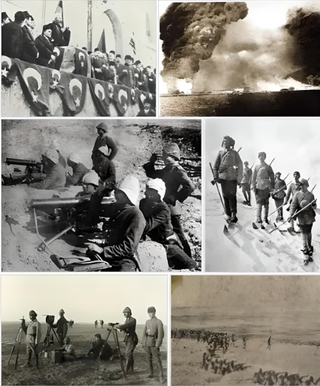
The Middle Eastern theatre of World War I saw action between 30 October 1914 and 30 October 1918. The combatants were, on one side, the Ottoman Empire, with some assistance from the other Central Powers; and on the other side, the British as well as troops from the British Dominions of Australia, Canada, and New Zealand, the Russians, and the French from among the Allied Powers. There were five main campaigns: the Sinai and Palestine, Mesopotamian, Caucasus, Persian, and Gallipoli campaigns.
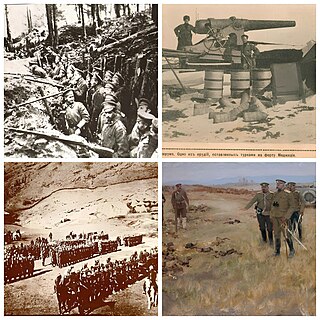
The Caucasus campaign comprised armed conflicts between the Russian Empire and the Ottoman Empire, later including Armenia, Azerbaijan, Georgia, the Mountainous Republic of the Northern Caucasus, the German Empire, the Central Caspian Dictatorship, and the British Empire, as part of the Middle Eastern theatre during World War I. The Caucasus campaign extended from the South Caucasus to the Armenian Highlands region, reaching as far as Trabzon, Bitlis, Mush and Van. The land warfare was accompanied by naval engagements in the Black Sea.

Russian Armenia is the period of Armenian history under Russian rule from 1828, when Eastern Armenia became part of the Russian Empire following Qajar Iran's loss in the Russo-Persian War (1826–1828) and the subsequent ceding of its territories that included Eastern Armenia per the out coming Treaty of Turkmenchay of 1828.

The Turkish–Armenian War, known in Turkey as the Eastern Front of the Turkish War of Independence, was a conflict between the First Republic of Armenia and the Turkish National Movement following the collapse of the Treaty of Sèvres in 1920. After the provisional government of Ahmet Tevfik Pasha failed to win support for ratification of the treaty, remnants of the Ottoman Army's XV Corps under the command of Kâzım Karabekir attacked Armenian forces controlling the area surrounding Kars, eventually recapturing most of the territory in the South Caucasus that had been part of the Ottoman Empire prior to the Russo-Turkish War (1877–1878) and was subsequently ceded by Soviet Russia as part of the Treaty of Brest-Litovsk.

Andranik Ozanian, commonly known as General Andranik or simply Andranik;, was an Armenian military commander and statesman, the best known fedayi and a key figure of the Armenian national liberation movement. From the late 19th century to the early 20th century, he was one of the main Armenian leaders of military efforts for the independence of Armenia.
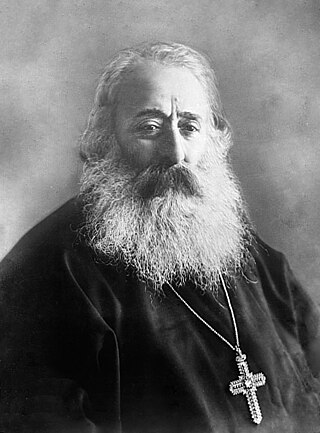
Mkrtich Khrimian was an Armenian Apostolic Church leader, educator, and publisher who served as Catholicos of All Armenians from 1893 to 1907. During this period he was known as Mkrtich I of Van.

Movses Silikyan or Silikov was an Armenian general who served in the Imperial Russian Army during World War I and later in the army of the First Republic of Armenia. He is regarded as a national hero in Armenia for his role in the Armenian victory at the Battle of Sardarabad.

The occupation of Western Armenia by the Russian Empire during World War I began in 1915 and was formally ended by the Treaty of Brest-Litovsk. It was sometimes referred to as the Republic of Van by Armenians. Aram Manukian of the Armenian Revolutionary Federation was the de facto head until July 1915. It was briefly referred to as "Free Vaspurakan". After a setback beginning in August 1915, it was re-established in June 1916. The region was allocated to Russia by the Allies in April 1916 under the Sazonov–Paléologue Agreement.

Garegin or Karekin Pastermadjian, better known by his nom de guerreArmen Garo or Armen Karo was an Armenian activist and politician. Armen Karo was a leading member of the Armenian Revolutionary Federation for more than two decades. He was one of the masterminds of the 1896 occupation of the Ottoman Bank in response to the Hamidian massacres, and of Operation Nemesis, in which several perpetrators of the Armenian genocide were assassinated. Between 1918 and 1920 he served as the first ambassador to the United States from the First Republic of Armenia.
The Armenian national movement included social, cultural, but primarily political and military movements that reached their height during World War I and the following years, initially seeking improved status for Armenians in the Ottoman and Russian Empires but eventually attempting to achieve an Armenian state.
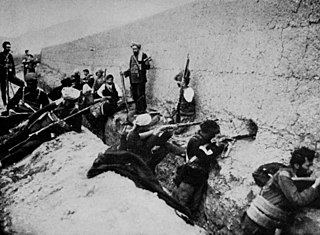
Armenian resistance included military, political, and humanitarian efforts to counter Ottoman forces and mitigate the Armenian genocide during the first World War. Early in World War I, the Ottoman Empire commenced efforts to eradicate Armenian culture and eliminate Armenian life, through acts of killing and death marches into uninhabitable deserts and mountain regions. The result was the homogenisation of the Ottoman Empire and elimination of 90% of the Armenian Ottoman population.
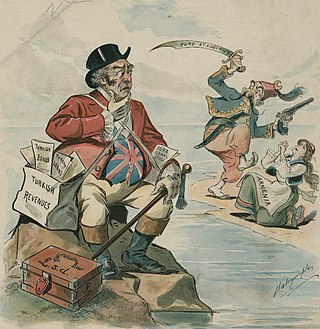
The Armenian question was the debate following the Congress of Berlin in 1878 as to how the Armenians in the Ottoman Empire should be treated. The term became commonplace among diplomatic circles and in the popular press. In specific terms, the Armenian question refers to the protection and the freedoms of Armenians from their neighboring communities. The Armenian question explains the 40 years of Armenian–Ottoman history in the context of English, German, and Russian politics between 1877 and 1914. In 1915, the leadership of the Committee of Union and Progress, which controlled the Ottoman government, decided to end the Armenian question permanently by killing and expelling most Armenians from the empire, in the Armenian genocide.

The Sasun uprising or Sasun rebellion of 1904 was an uprising by Armenian militia against the Ottoman Empire in Turkey's Sason region in 1904. The empire wanted to prevent the formation of another semi-autonomous Armenian region in the eastern vilayets after its defeat in the First Zeitun Rebellion. In Sason, the Armenian national liberation movement recruited young Armenians. Upon investigation, a European mission concluded that Armenians were not at fault, but rather acted in self-defense. The mission called for the sultan to enforce the reforms that were previously pledged.

The Persian campaign or invasion of Iran was a series of military conflicts between the Ottoman Empire, British Empire and Russian Empire in various areas of what was then neutral Qajar Iran, beginning in December 1914 and ending with the Armistice of Mudros on 30 October 1918, as part of the Middle Eastern Theatre of World War I. The fighting also involved local Persian units, who fought against the Entente and Ottoman forces in Iran. The conflict proved to be a devastating experience for Persia. Over 2 million Persian civilians died in the conflict, mostly due to the Armenian genocide by the Ottoman regime and Persian famine of 1917–1919, influenced by British and Russian actions. The Qajar government's inability to maintain the country's sovereignty during and immediately after the First World War led to a coup d'état in 1921 and Reza Shah's establishment of the Pahlavi dynasty.
The Zeitun rebellion or Second Zeitun Resistance took place in the winter of 1895–1896, during the Hamidian massacres, when the Armenians of Zeitun, fearing the prospect of massacre, took up arms to defend themselves from Ottoman troops.
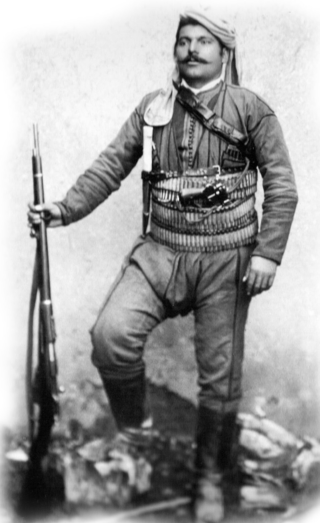
Murad of Sebastia was a well-known Armenian fedayee during the Armenian national liberation movement in the Ottoman Empire. He was born in the Armenian village of Govdun (Կովտուն), about 20 km east of the town of Sivas to a poor rural family that had recently moved to the village. After working as a shepherd and farm labourer during his childhood, he moved as a teenager to Constantinople, where he worked for meagre earnings as a carrier. He joined the Social Democrat Hunchakian Party and, in the 1890s, participated in Armenian demonstrations protesting against the second-class treatment of Armenians within the Ottoman Empire.

Ruben Ter Minasian was an Armenian politician and revolutionary of the Armenian Revolutionary Federation (ARF) who played an important role in the Armenian national liberation movement and later in the First Republic of Armenia.
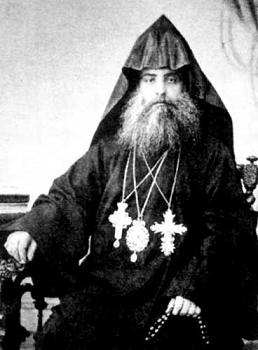
Matthew II Izmirlian was the Catholicos of All Armenians of the Armenian Apostolic Church at the Mother See of Holy Etchmiadzin in 1908–1910. He succeeded Mkrtich I Khrimian, who reigned as Catholicos from 1892 to 1907.
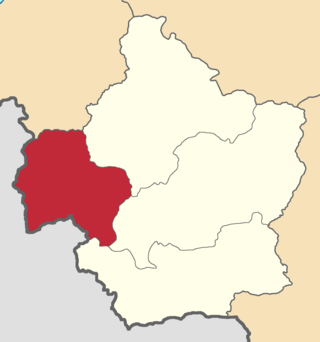
The Olti okrug was a district (okrug) of the Kars Oblast of the Russian Empire existing between 1878 and 1918. Its capital was the town of Olty, presently part of the Erzurum Province of Turkey. The okrug bordered with the Kars okrug to the southeast, the Ardahan okrug to the northwest, the Kagizman okrug to its south, the Batum Oblast to the north, and the Erzurum vilayet of the Ottoman Empire to the west.